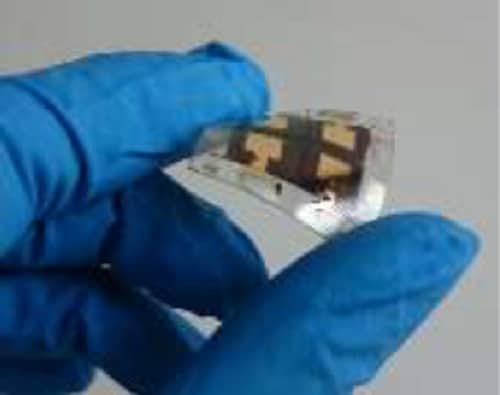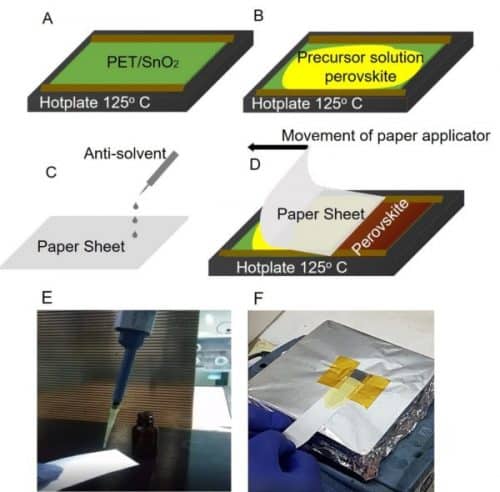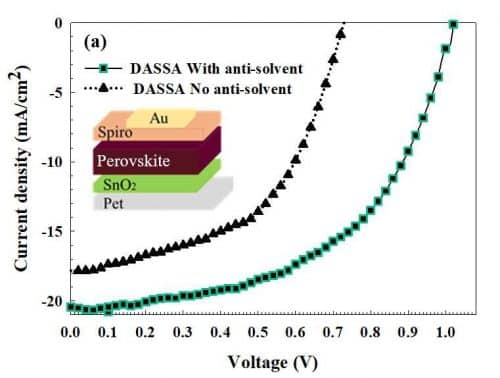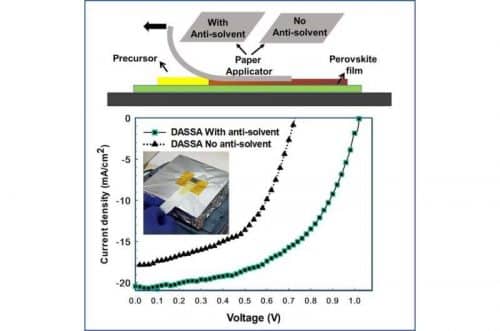The new method uses a simple sheet of paper to deposit the perovskite films for increased efficiencies when dissolved in anti-solvent

Perovskite semiconductor solar cells are a fascinating photovoltaic technology as it possesses similar efficiencies to a silicon-based one but is developed or printed in thin films via liquid inks. Most perovskite films undergo deposition through spin coating that guarantees high control on film thickness as well as morphology.
However, most of the ink gets expelled during deposition and is wasted. Efforts have been made to change it by developing coating techniques for deposition over large areas that improve the morphological quality of the perovskite semiconductor films. But this method is very difficult to implement when employing large area coating techniques; careful drying processes are preferred that involve heaters or gas flows to control the morphology of the perovskite film.
Now, a new method by a research team from CHOSE (Centre for Hybrid and Organic Solar Energy), Department of Electronic Engineering, University of Rome Tor Vergata, Italy and the Department of Physics, University of Zanjan, Iran, aim to improve that. The new method uses a simple sheet of paper to deposit the perovskite films without a spin coater or other expensive equipment to achieve high performance.
A sheet of paper when dissolved in anti-solvent increases efficiencies (almost by 82 per cent) as compared to when used dry. Paper, compared to other soft applicators, possesses the right porosity and smoothness for the deposition of high-quality perovskite films. The highest efficiency of a flexible cell fabricated with this technique called Deposition via Anti-Solvent-Soaked Applicator (DASSA) was 11 per cent.



The researchers believe this is a satisfying efficiency, particularly for flexible solar cells on plastic PET substrates. Although the corresponding efficiency achieved with spin coating devices stands at 14.9 per cent, there is a scope for further improvement of the DASSA.
“I serendipitously noticed that leaving a piece of cleaning paper soaked in the solvent over a wet perovskite precursor film turned brown, what looked like a rather promising perovskite semiconductor film. I was thus suggested to develop a coating method based on this discovery,” described Nazila Zarabinia, research team member. “We worked on trying different soft applicators: the one that work best was paper possessing the most beneficial properties of porosity and smoothness” she added.
“We think this simple method will appeal to all those labs setting up a line in perovskite research who have not been able to buy expensive deposition equipment. It can also be of particular interest to groups developing automated printing techniques by applying the anti-solvent, not on the perovskite film as usual, but the applicator instead. Furthermore, it will be interesting to endeavour to extend this method also to the transport layers for full cell manufacturing,” said Thomas M. Brown, research team member.
Read here for more






